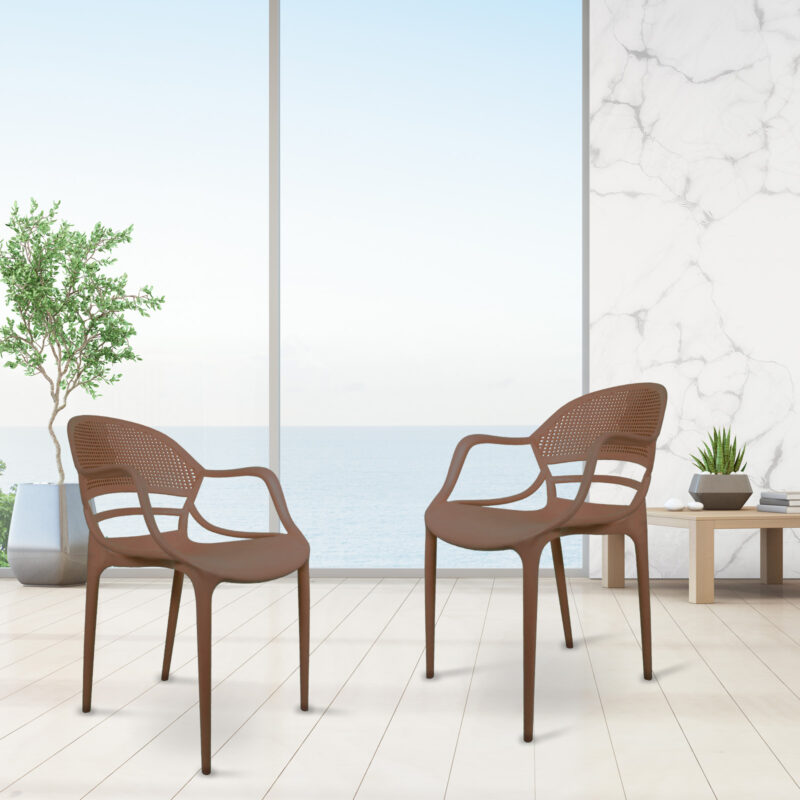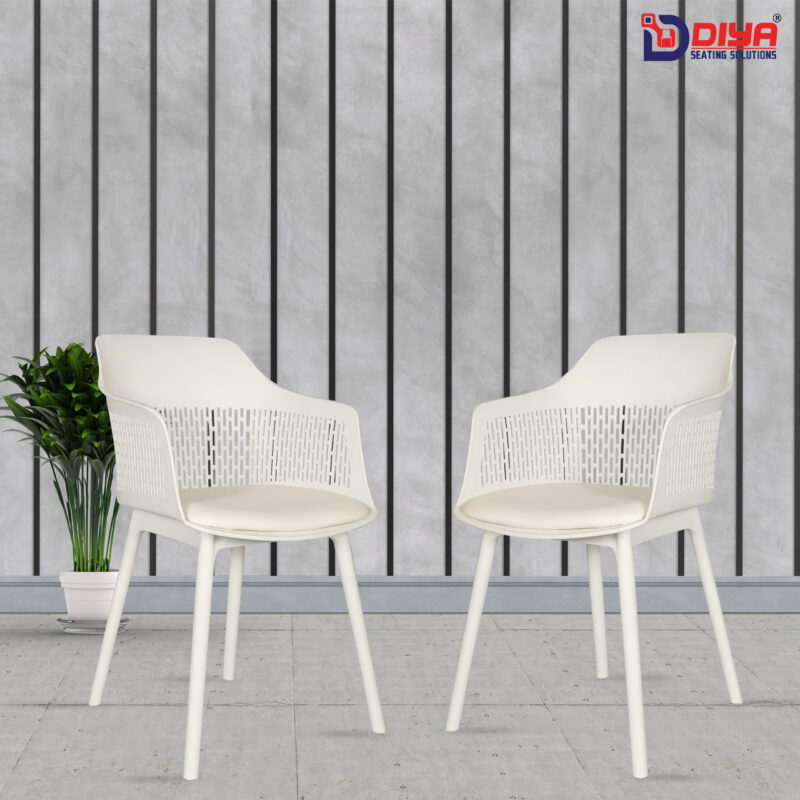How Diya Chairs Are Tested for Strength & Safety: Ensuring Quality and Comfort

When buying People want furniture, especially chairs. to know that they’re receiving a product that not only looks good and feels comfortable but is both safe and robust. A chair is something we sit in every day, after all, and we expect it to hold up to use day after day for years to come. For a company like Diya Chairs, which prides itself on being durable and comfortable, getting their products to meet stringent strength and safety requirements is important.
In this blog, we will go deep into the process of testing Diya Chairs for strength and safety. From the selection of materials to the stringent testing protocols that ensure each chair can withstand daily wear and tear, we will look at the measures taken to produce chairs that last while keeping you safe and comfortable.

1.The Significance of Strength and Safety in Chair Design Before we look at the actual testing processes, let’s try to see why testing for strength and safety is so important in the manufacture and design of chairs. A chair is not merely a sitting spot – it’s a piece of furniture that should provide support, comfort, and stability.
Comfort: The chair should be strong enough to hold the weight of the user without sagging, breaking, or being uncomfortable. Durability: Chairs experience constant wear and tear, even if it is from regular usage or weight shifting. They must be able to withstand this. Safety: A wobbly chair or a disassembled chair can cause accidents and injuries. Making sure that the chair is safe involves each piece of the chair being thoroughly thought out, so it withstands normal usage. For Diya Chairs, making both strength and safety a reality is not just a matter of testing the design of the chair, in addition to being attractive with the parts that were applied, how it’s constructed, and how about it can withstand different stresses in the long run.
2. Material Testing: Quality Begins from Within The safety and strength A particular seat are greatly determined by the materials used. Diya Chairs procures high-quality materials and tests them even before they’re used to make a chair. This is how the materials are tested: Wood Testing Wooden chairs, especially those made of hardwoods a lot like oak, maple, or mahogany, are subjected to strength testing to determine if they can withstand the pressure and weight, they will probably last. Wood is tested for:
Strength and Load-Bearing Capacity: This is done through a compression process testing, where the wood is subjected to force to see how much weight it can carry without cracking or breaking. Flexibility: Wood is later investigated at. to see how much it can bend without snapping. A certain level of adaptability is important for durability, especially in chair frames. Moisture Resistance: Wood has a natural porosity, and excessive moisture will make wood warp or rot. Diya Chairs takes care that the wood is sealed or treated to withstand moisture.
Metal Testing Most Diya Chairs Add metal pieces into frames or legs, especially for office chairs or contemporary designs. Steels, aluminium, or irons go through the following tests: Tensile Strength: This test measures how much pressure or weight the metal can hold before it starts to extend or break. This makes sure that the elements of metal are the chair will not bend when applied in a normal way.

Corrosion Resistance: Metal parts tend to be exposed to water, and this can result in rusting and degradation with time. Diya Chairs makes sure that metals are coated with rust-resistant layers or are manufactured from alloys that are naturally corrosion-resistant. Fatigue Testing: The test consists of repeatedly loading the metal over time in an effort to repeat years of usage. The test is designed to ascertain how many called an aluminium alloy. will withstand the pressure or if it will break down, which in turn would cause a failure in the chair.
Upholstery and Cushioning Testing For durability and comfort, the cushioning and upholstery materials are necessary. Diya Chairs employs materials like, on more too leather, fabric combinations, and vinyl for different chair designs. These materials are tested for: Abrasion Resistance: Chairs, more so those used in settings or high-traffic areas, are exposed to a lot of movement. Fabrics are tested to see how effectively they hold up to friction over time. This is done through Martindale Testing, which rubs the fabric against a standardized abrasive material to simulate everyday wear.
Colour Fastness: This ensures that the fabric doesn’t fade or bleed when exposed to sunlight, water, or regular cleaning. Flammability Testing: Upholstered products are tested to determine if they will not ignite and burn easily and meet fire safety regulations. Plastic and Other Composite Materials Plastic, PVC, or other man-made materials are employed for legs or backrests in certain chair designs by Diya Chairs. These are tested for:
Impact Resistance: Plastic parts are subjected to tests to confirm they will not break or crack if dropped or bumped. This is especially critical for chairs in high-traffic settings, like, more too settings or schools, where the chair could be knocked over. UV Stability: Plastic is tested for outdoor chairs to confirm that it will not break down due to the rays of UV from the sun. This will prevent the chair from losing its colouring although the construction spans time when it is left under the sun.
3. Structural Integrity Testing: Confirming Strength Under Duress After choosing and testing the materials, Diya Chairs performs structural integrity tests on the chair Specialize in order to ascertain its strength and stability. These tests mimic real usage and comprise: Weight Testing Chairs need to support apart weights without buckling or collapse. Measurements of strength are done by Diya Chairs, wherein the chair is subjected to a specific weight (usually way more than the average individual’s weight) and ratified is to the reality that to how much weight the chair would take place before all of the parts included in the chassis. begin to give.
Static Weight Test: In this test, the chair is subjected to a fixed weight for a long time to see how it performs in the long term. Dynamic Weight Test: In this test, pressure simulated when one sits or rises is placed on the chair, and other motivates that were reminiscent of rocking or leaning are applied. The aim is to ascertain when it has the shell has the chair is still sturdy. and at a In perfect working order Stability Testing One of the most critical safety aspects of a chair is stability. A wobbly or unstable chair would be a big safety risk. Diya Chairs performs tipping tests to ascertain that a chair tips over when subjected to moving weight or jerky movements. For instance:
Tilt and Tilt-back Tests: The chair is tilted forward, backward, and side-to-side to determine if it will not change at different angles of pressure. This tests the chair to ensure it not easily tipped when the person shifts their weight. Load Testing on Arms and Backrests: Arm-chairs or back rested chairs are tested to make sure the arms or backrests will be able to support the applied forces when someone leans against them or uses them for support.

4. Safety Testing: Preventing Accidents and Injuries Ensuring the chair is safe for use is crucial for protecting customers. Diya Chairs takes apart safety measures during testing to prevent accidents caused by chair malfunctions. Here’s how: Sharp Edges and Points Testing Chairs are investigated to ensure no Pointy sides or peaks which can lead to break down or injury. Edges are smoothed or rounded off during production, especially in areas wherein the legs, The basis, that serves in its place joints are. No Pinching or Crushing Hazards Some chairs, especially in the office chairs that possess elements that can be modified and checked barring a cause which may lock fingers or arms. Diya Chairs ensures whenever happens that takes place parts, such reclining mechanisms or alteration of the seats do not create such accidents.
Reclining Mechanism Safety For reclining chairs (e.g., office chairs), the reclining function is checked for fluid movement and to verify that the chair survives on place firmly when reclined. This helps avoid accidents when the chair suddenly collapses or tips over.
5. Long-Term Durability: Testing for Extended Use Chairs that are beautiful when brand new but collapse after a few months are of no use to anyone. Diya Chairs makes sure their products last long by conducting long-term durability tests: Cycle Testing: This mimics years of wear and tear by applying pressure and weight over and over again to apart areas of the chair (e.g., seat, backrest, and armrests). The chair is “sat upon” thousands of times in the course of this testing to determine its durability. Wear and Tear Testing: Fabric, padding, and structural elements of the chair are subjected to apart conditions (heat, cold, humidity, etc.) and noted how they react over extended periods.

